
I feel your pain, I returned to my car and recently found some inconsiderate S*%t in a dodgem, rubbed off my bumper leaving a nice scratch. Parking your car in public is a real gamble.
So, does Colgate toothpaste remove car scratches? Colgate toothpaste offers very little to no benefit in the removal of car scratches. In fact, rubbing the paint with toothpaste can damage the paint surface.
But don’t panic, in this post, I’ll show you how to identify common types of car scratches and how to fix them, and also mistakes to avoid.
Toothpaste & Car Scratches
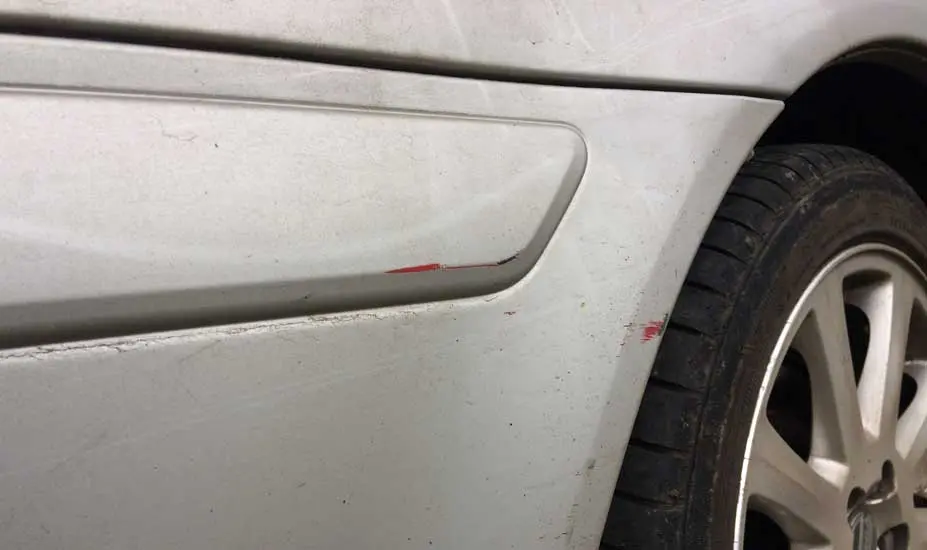
So let’s give it a try, in this test I used triple-action Colgate toothpaste. I had what I call a rub mark on my rear bumper, you know the type, rubber mark, and some paint swapping.
Mistake to avoid: I washed the scratched area with soapy water and rinsed it down. Rubbing car paintwork without washing the area first causes dust and grit to scratch the paintwork, kind of like sandpaper.
Then I assessed the scratch type, not all scratches are the same, some will be easier to repair than others. (more on that later)
Method

I put the paste directly onto a soft clean cloth and using a circular motion rub the affected area. The paste doesn’t move freely on the paint, it feels gloppy and difficult to spread, like pushing warm chewing gum.
I couldn’t sense any abrasion through my fingers and without abrasion it won’t remove the scratch.
I rubbed for about 10 minutes checking periodically but couldn’t see any discernible change. The paste itself started to dry, applying some water helped soften it.
So, Colgate toothpaste to remove a car scratch is a fail, however, I could imagine a more abrasive toothpaste actually working.

Mistake to avoid: It is possible to damage your paintwork using toothpaste, so I don’t recommend it. Instead, hit the local gas station and buy a color restorer or any polish (not wax) will do the job. Polish is perfect for light scratches, but deeper scratches will need a paste with more Oomph!
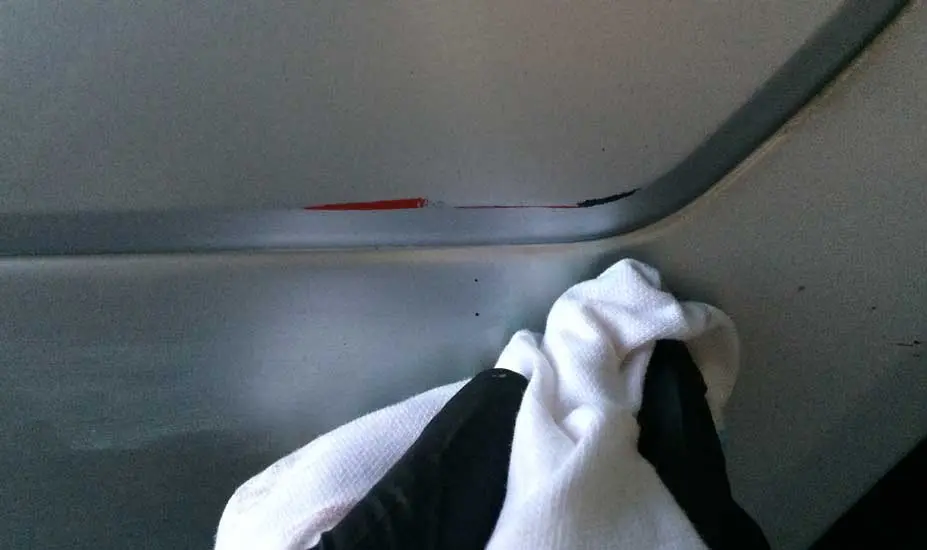
Different Types Of Car Scratches
A scratch is a scratch, Right! Yes and no. Sure we can call them all scratches but some scratches will be a lot easier to remove than others.
Here we’ll break car scratches into two groups, the group we can handle ourselves and the group that will require the skills of a paint-shop.
Handle ourselves group :
Generally, scratches are minor and can be repaired by the car owner with little effort, knowledge, and the right materials.
Minor scratches can be described as any scratch where your car paint is largely unbroken, like my bumper above. Small areas of broken paint can be repaired successfully with color match touch-up sticks.
Often minor scratches can look horrific, you know, lines of black rubber or foreign paint on your car. Despite their look, these types of scratches are the easiest to repair and in most cases can be removed without any trace.
Needs the paint-shop group :
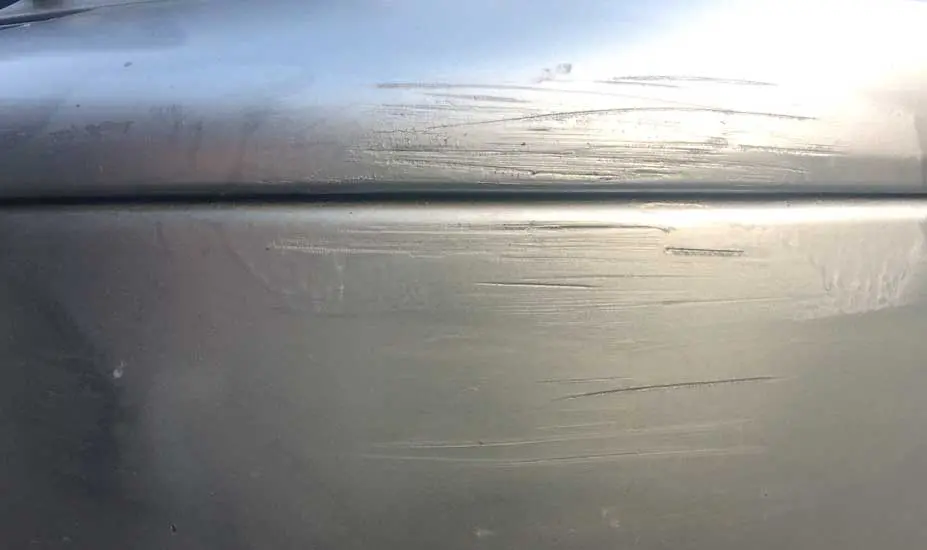
Broken paint on metal causes corrosion and so obviously shouldn’t be ignored like you could, even if you wanted to.
As you know we can easily take care of small areas of broken scratched paint, but if you’ve got a long line of broken paint or several deep scratches in one place, they’ll need the professional.
Plastic bumpers scratch easily and as they flex when hit, the clear coat and paint can sometimes crack, especially on older cars, they too will need the paint shop.
So what’s it going to cost? A good paint shop will charge anything from $150 for a small scratch, and $1500 for the whole side of a car, if dent removal, body filler, or special paint is needed, the price moves to the “chooo, it’s gonna cost ya” territory.
As an alternative, get a quote from your local mobile car paint repair franchisee, they do pretty good work, they’re cheaper and faster than a paint shop. But be realistic, they’ll only be able to do localized work like a scuffed bumper or wing, they won’t have the facilities to paint the side of a car.
Bear in mind also in some states doing this type of work in your yard is illegal, so check beforehand.
How To Remove Car Scratches
The success of the repair will be determined by severity, the number of scratches, where they are, and the tools you use. Generally, flat surfaces like hoods, tops of the wings, and trunk lids are more noticeable and so, in these areas a DA buffing machine works best.
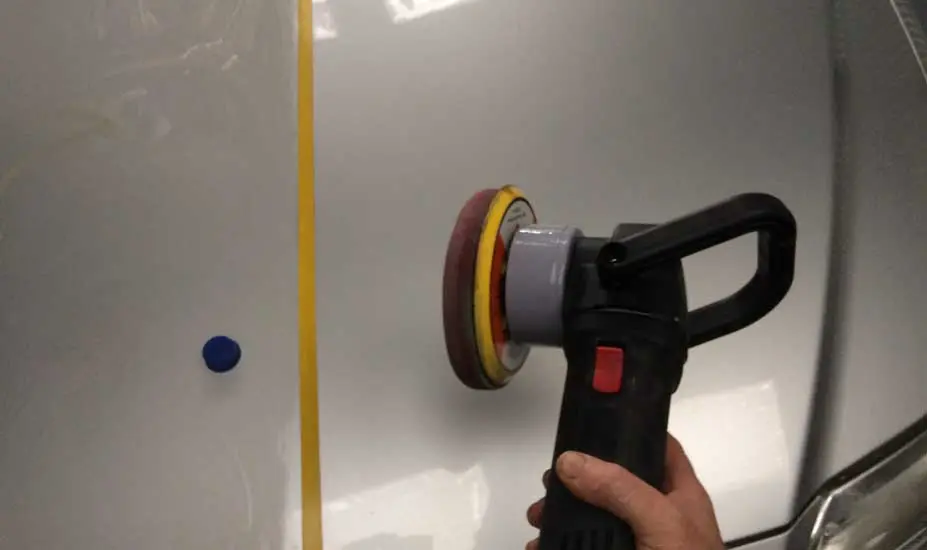
Obviously, you may not have a buffing machine, but don’t sweat it. You won’t hurt the hood by trying the repair by hand first. If it doesn’t take the scratches out, consider buying a DA buffer.
They’re not expensive and by simply changing the pad, they convert from buffer to sander. They can also be used about the home on many DIY projects.
They’re not difficult to use either, I wrote a whole post about fixing oxidized paint using a DA buffer “Restore faded red car paint”.
What is a scratch? It’s basically a broken coating, meaning the scratch is at a lower level than the paint surface. The principle behind the process of removing the scratch is simple.
Rubbing an abrasive around the scratch area removes the higher coating material so as to flatten the area and blend the two surface levels together.
Repair Compounds
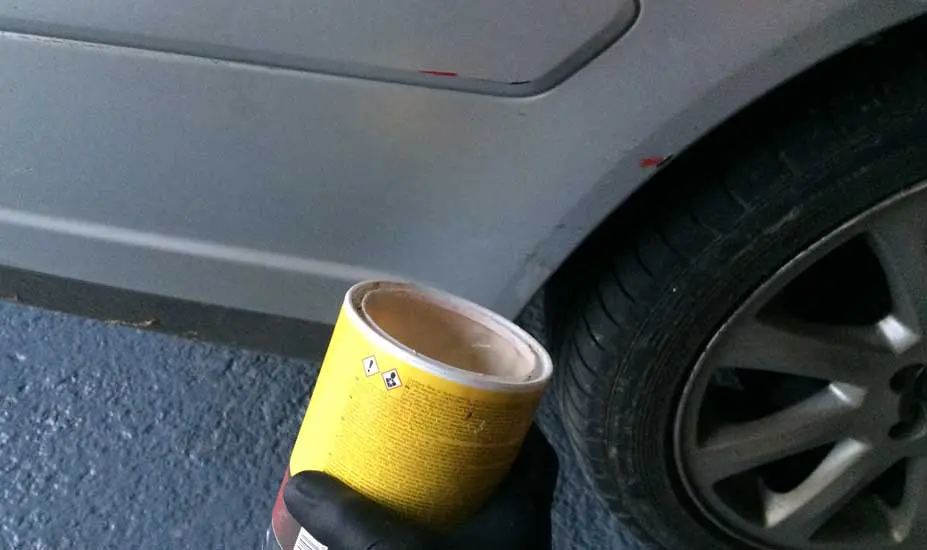
Common car paint repair materials include various grades of liquid & paste abrasives know as compounds.
Finer scratches require only a fine cutting paste. Polish is the finest cutting paste of all. Many people think the polish is for shining your car, it does have that effect, but only because it has rubbed away a microscopic layer of dead paint from the surface.
The next grade up is liquid color restorer followed by several grades of ever more abrasive paste compounds. You won’t damage your paintwork by using polish, color restorer, or regular grade one cutting paste compound.
Mistake to avoid: But I don’t recommend the use of course compounds, they have the potential to damage paint if misused, leave these to the pros.
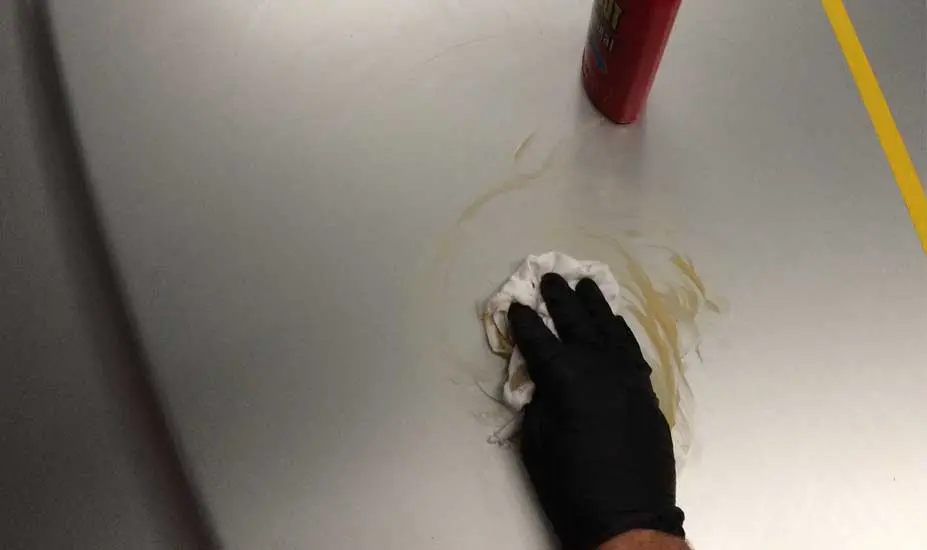
Anyway, determine how deep your scratches are, if your scratches are fine, then go for it, try car polish (not wax). The goal is to match the scratch with the correct grade cutting paste, but don’t sweat this detail.
Pro tip – If you use the regular paste compound, then follow it with a color restorer, then polish, the ever-finer compounds to create a mirror finish.
The Method
My car had a light scratch low down on the bumper, well out of the line of sight. One of the more forgiving locations, I thank my spatially ignorant friend for this small consolation.
Step One:
The process begins with a thorough wash of the affected area. No need to dry the car.
Step Two:

Using a soft damp cloth apply a good quality cutting paste, I like Farecla white cutting paste, but you can use whatever color restorer is available at your local parts store or gas station.
Carfidant Scratch and Swirl Remover is awesome, easy to use, and won’t cause paintwork damage, it is suitable for all paint types, made in the USA, and conveniently sold and delivered by Amazon.com, Nice!
Step Three:
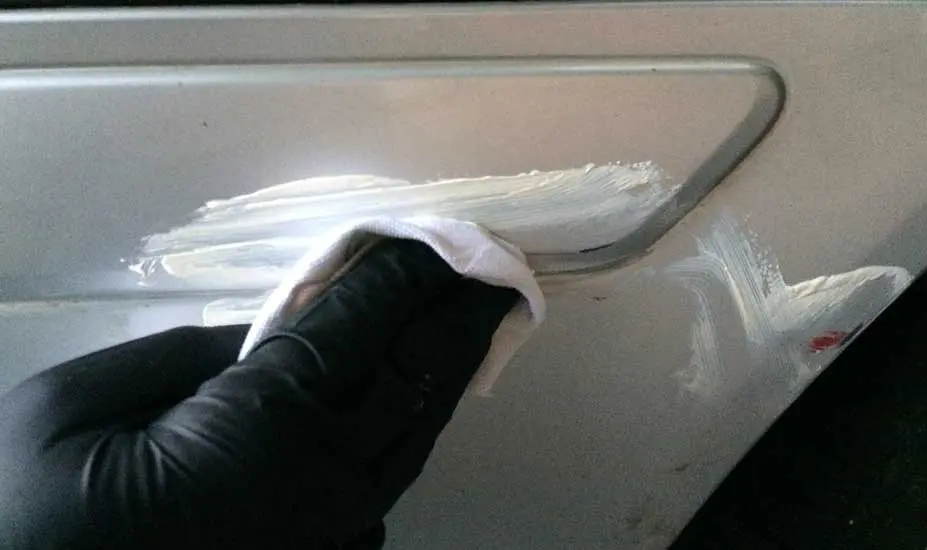
Work the paste into the affected area in a circular motion, using medium pressure on the fingertips. Pass over the affected area as many times as necessary to remove any foreign debris.
A color restorer and/or polish can be used after the paste for an even finer finish.
Step Four:
Using a clean, soft, dry cloth, remove the paste and examine the finish. Repeat the process if necessary until the scratch has vanished.

Step Five:
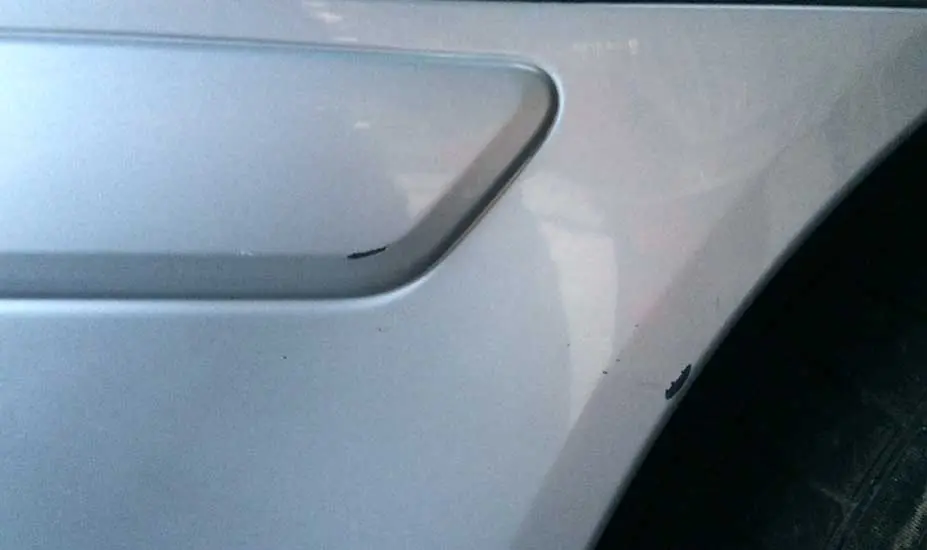
Waxing is step six and paint doesn’t sit over wax very well. So if you have any small areas of broken paint, you’ll need to use a color match paint stick now. You’ll find a link on the Car cleaning tools page to the Dupli-Color paint stick I use.
Step Six:
Use a quality wax to seal and protect the area, one coat does the job here. You can check out all the cleaning products I use on the Car cleaning tools page.
Related Questions
Does Toothpaste ruin car paint? While toothpaste itself may not ruin your car paintwork, it is possible to damage your paint by rubbing the toothpaste on the paint surface.
You may also find the following posts helpful:
Is it necessary to polish a car before waxing?
How do dealers make cars so shiny?
- About the Author
- Latest Posts
John Cunningham is an Automotive Technician and writer on Rustyautos.com. He’s been a mechanic for over twenty-five years and has worked for GM, Volvo, Volkswagen, Land Rover, and Jaguar dealerships.
John uses his know-how and experience to write fluff-free articles that help fellow gearheads with all aspects of vehicle ownership, including maintenance, repair, and troubleshooting.

